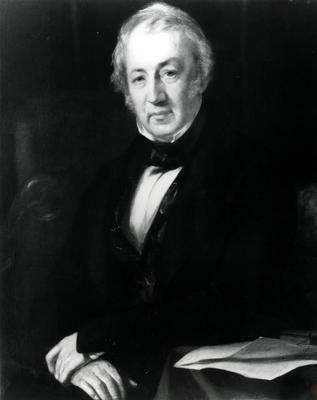
A portrait painted c 1830 of Andrew Ure (1778-1857), scientist.
Born in Glasgow into a wealthy family, Ure studied at the Universities of Glasgow and Edinburgh before being appointed Professor of Natural Philosophy at Anderson's Institution in 1804. He established a course of scientific lectures which were popular with working men and women students. He was an extremely versatile scientist, his interests extending to physics, chemistry, geology, meteorology, astronomy and medicine, subjects which featured in his lectures over the years. His book, Dictionary of Chemistry (1921) was the first of many, and was regarded as a classic in the field. He was also interested in the application of science to industry, and a proponent of the factory system.
Ure was an often controversial figure. In 1818 he created a public sensation by carrying out experiments on a murderer called Matthew Clydesdale after his execution. In the following year he divorced his wife, Catherine, on the grounds of her adultery with Granville Pattison, Professor of Anatomy. His attitude to students in the Mechanics' Class led to a split and the establishment by some of them of the Glasgow Mechanics' Institution. Increasingly acrimonious disputes eventually led to his resignation in 1830, when he moved to London to pursue his career.
Reference: P4/18
Reproduced with the permission of Strathclyde University Archives
Keywords:
anatomy, Anderson's Institution, Anderson's University, astronomy, chemistry, divorces, factory system, geology, Glasgow Mechanics' Institution, medicine, meteorology, murderers, natural philosophy, physics, professors, science, scientists
You have 1 image in your photo album.